Here is the part two article about the Dinosaurs attraction concept that Jeff Burke and I designed seven years ago. This time i will explain the technical aspects of the ride, "how we would do it". If you have not read the first part of this article you must do it before reading this one. You'll find part one HERE.
Above is the Chronos Time travel building of the first opening version. There is not a lot to say about it as it shows the facade of the building. I've never been satisfied with this artwork as the painter didn't do a good interpretation of what i had in mind but, in two words, what i can say is that the idea was to don't spend all the money on the building architecture but to keep it for what is inside, the ride itself.
The queue decor and its spiral style came from a Las Vegas trip that we did Jeff Burke and I. We wanted to have a look to the teleportation effect at Star Trek Experience and before you enter the teleportation area the STE queue had this spiral walkway. Jeff, and i agree with him, thought that it could be the right thing for the queue inside Chronos Time Travel. The ceiling had a night sky effect with fiber optics.
The Time Shuttle is a bit more complicated, but not that much. The Audio-animatronic robot must be sophisticated - the same kind of quality than the Timekeeper of the Visionarium attraction (From Time to Time in the U.S) and the movie and effects on the ceiling is a retro projection effect. If i remember it well i think the shuttle is supposed to have a simulation system so it could shake a bit.
The Mayan decor of the second opening version is of course inspired by Yucatan pyramids. If you don't have an image in mind of the Yucatan site, think to the Mexico pavilion at Epcot, with additional Dino heads sculptures. Here, the pyramid also hide the big facility for the ride itself which would be located backstage, like they did for the Haunted Mansion show facility at Disneyland which is on the other side of the railroad track.
The pre-pre show was inside a archeological tent with fake Mayan antiques and there is nothing special to say on its making-of. Disney did this kind of theming pretty well in the queue decor of the different Indiana Jones attractions, like at DLP Indiana Jones et le Temple du Péril.
Same for the decor inside the temple. Think to what WDI Imagineers did on the queue decor of Indiana Jones Adventure but this time with a Mayan theming and you'll have a good idea of how it will look.
The pre-show scene inside the secret chamber is a more difficult one. As you can see on the painting, we have the four statues who slowly glow from the inside - this is a lighting effect, not difficult to achieve, same for the laser beams. The vortex on the ceiling is a retro-projection effect. When guests enter the "chamber" the ceiling looks like stone but on a certain point of view it's like in the Haunted Mansion stretching room. When the room is stretching the ceiling looks normal, made from wood, but when light comes down you can see the hangman "behind", because the ceiling is in fact a painting on scrim, a material on which you can also do retro projection effect.
The hard part is of course the teleportation effect. At Star Trek Experience the teleportation room was smaller than our secret chamber and the effect was a simple but very well done theatrical effect as the four walls goes up and disappear in the ceiling of the Enterprise room located behind. The most important, including in our show, is the 15 seconds of flash lights which "blind" the guests just enough time so they don't see the walls disappearance. In our case it's more complicated and we can't do it like they did in Vegas. We have these giant statues, the projection effect on the ceiling, etc...and to have all this decor lift up and disappearing inside the ceiling is not possible.
So the best is may be to have the wall in the back of the room - the one behind the guests - going up and the area where the guests are standing would be a platform which will move backwards to arrive in the jungle decor located on the other side of the wall. All this of course during the 15 seconds of darkness with flash and sound effects to blind the guests during that time. Also - and it's not on the rendering - there would be a 30 inches high wall all around the platform as guests must not be able to go out of that area when the platform will move. Another solution may be to have the platform with the guests going down in a room under. And, as guests may feel the vibration of the platform movement during the transition the idea is to already have the platform shaking a little bit when everything begins to go awry, before total darkness. As guests would feel the ground shaking before the moving effect they eventually will not notice that the platform is moving when it will be the case. You got the picture?
This is basically a jungle decor, nothing technically difficult to achieve, and of course some jungle decor elements must be "stick" to the other side of the wall - the one going up in the secret room - to avoid the guests to see it when light comes back. Nothing difficult here although it must be very well done.
We are now in the first ride scene. As i've said before the attraction needs a huge facility, around 8000 square meters. The attraction also needs a lot of decor and fake vegetation but that's not the problem (except what it costs, of course!).Jeff estimates that we need a depth of 20 meters - 70 feet - in that scene to give the illusion of depth that you can see on the rendering. False perspective, the first volcano in 3D and a huge cyclorama for the sky, with projection effects for the volcano smoke and real water with eventually smog effect for the swamp. And fireflies effect just like they do it in the POTC Blue Bayou sequence. We also wanted to have a scent effect to add another sense. So in this scene guests would smell a swamp scent and the scent of course will change all along the ride depending of each scene.
For the Apatosaurus audio-animatronics dinos it was the easy part as Kokoro - a Japanese company - is already doing them. Not all dinosaurs from them are good for what we're looking for and that's why we saw also others animatronics companies but the Apatosaurus AA they are doing are fine, although they probably would request re-programming.
The main problem with Audio-animatronics is not only the mechanical part which is of course very important as elements must be reliable, but also the programming. You need a very good programmer and there is not a lot on the market. WDI have of course the best one, but for the project we could have one of the best, former Imagineer no longer working at WDI but who did some of the best Audio-animatronics programming at Imagineering, called Dave Feiten. Dave is a genious programmer and although he's doing now something totally different he was very interested by the project and would be happy to be back programming AAs.
And about the time buggy vehicles, they were supposed to have a motion platform and were able to move without guide track, the kind of vehicles used in the Spiderman ride vehicles not the kind used in the Snow White dark ride. And of course with on-board audio system.
This next scene, as you can see, is really a big one. We designed it to be a "wow" scene and you have many AA dinos in it. The one drinking in the swamps already exist (always from Kokoro, i think) so these are not the problem. It's a bit different with the two huge Brachiosaurus. The first one on the left is the easiest to do. He's big, i agree but he is not really walking and basically eating leaves from the tree. What is difficult to achieve with this kind of animals is when they have to bend and raise the neck - like the first dino you see in the Jurassic Park ride. Generally the long neck is made of multiple mechanical segments and there is a risk that one of them goes wrong. But here the Brachiosaurus neck don't have to bend a lot, so we don't have this difficulty.
Then you have the Cryptoclidus coming out of the swamp to attack the other Brachiosaurus. For the Cryptoclidus we have a mix of bubble effects to give the illusion that "some creature" is moving inside the swamp and then it goes out. An underwater mechanical arm will move in the swamp on 10 meters or so and then project him out. But only the head, jaws and the fins would move, just enough to give the illusion.
The other Brachiosaurus was really an engineering challenge for the animatronics manufacturers we met. First, there is the fact that his feet are in the water which don't makes things easier. So we decided that he could be on the shore at few inches from the lagoon. Then, what i wanted is to have the Brachiosaurus raising his front legs AND at the same time raising his neck to the upper point and then open his mouth to shout. It's indeed difficult to achieve - and it's probably the reason why we've never see this in any other dinos attraction - but that's also the beauty of the scene. The main problem is that you need a huge counter-weight, hidden of course, when the dino will raise his front legs. And specially when he will put back his legs on the ground. To raise the legs is difficult but the most sensitive part is to put them back, and to do it slowly to avoid an important shock when they will touch down. Because he would have to do this 1800 times a day it is a big engineering challenge. To lift up the neck is nothing in comparison, specially because the starting point of the lift of the neck was not too low.
Because we all know that problems can happen with Audio-animatronics, to have two different show movements on this one was also interesting. If it happens that the legs lift is not working, the neck and mouth effect still could be working and "save" that part of the show. Inversely, if the neck stops working and the legs still can go up, the show will "work", at least until the maintenance guys arrive.
Also, Jeff thought - and he's right - that a "sunset" lighting on that scene would be better than the full mid-day light you see on the artwork. Another good idea from Jeff was to add many smaller creatures so guests would have even more things to look at - a bit like in the Pirates of Caribbean auction scene where you have the pirates and the auctioneer but also chickens in cage, etc, which makes the scene more "rich".
I'm not a big fan of that scene but because it's supposed to be a "family ride" and that youngers always like dinos babies we decided to keep it. Nothing difficult here, i think that the whole AA scene is even already available from the Japanese company.
Same for this one, Kokoro is manufacturing these scenes above and below and i think their result is quite good. All the rest is fake vegetation, background painting, etc...and pine scents.
The scene with the Stegosaur looks easy to do and it is certainly not a very difficult one, but there is some difficulties too. The tree which is falling down when the Stegosaur tail hit it is not difficult to do. First, it never breaks down totally and a part of it of course remains attached to the trunk and go back in place when the vehicle is gone. For the Stegosaur tail movement it's a bit different. You can do easily this movement with a AA, but all the beauty comes from the speed - and it must look "natural"! That is less simple, but not impossible.
Here is a scene more complicated to achieve. As i've said in the scene description, "one of the velociraptor would "jump" on the guests vehicle from a 10 foot high rock on the left side of the track. Then to avoid it, the vehicle while still moving will spin at 90 degrees looking towards the right side of the track and the high grasses from where the other velociraptor would "jump" on the vehicle. So it is one velociraptor after another who "attack" the guests, and not both together".
Okay, now, how do we do that? At the start of the scene the guests see only the head and neck of a velociraptor hidden in high grasses. That's the easy part, just a Audio-animatronic head. Then they hear "sound of footsteps and the movement of the grass". Easy, too, thanks to sound effects and small mechanical stuff which moves the grass to give the illusion it is moved by the raptor. And then comes the raptor attack. The most difficult is the one who jumps from the rock. Of course he don't really jump, he is tied to a mechanical arm hidden behind the rock which project him in direction of the guests. Its tail, arms, head and jaws are all animated parts which will move at the same time to scare the guests. Same technique for the one "jumping" out of the high grasses.
This scene in the forest with the Therizinausaurus and its huge razor-sharp claws is not an easy one. The storm and rain effect is the simple part. As the light of the scene would be darker than on the rendering we would use a background projection effect for the rain, just like in the skull at the helm scene in Pirates of Caribbean. Wind machines and lighting effects, too, and eventually a bit of "real" raindrops to have the guests wet a little bit.
The Therizinausaurus Audio-animatronic is more difficult. We wanted it to walk towards the vehicle and then stop and do this movement with his claws. The trick was to have it on a platform hidden by the grasses and it's the platform which will move. But if one day we build the ride i'm afraid we will have to cancel the "walking" movement as we need to have it in a very stable position for the arm movement. This was imagined before Expedition Everest existed and when we see the problems they have with the Yeti - who do the same kind of move with his arm - it makes me think that this scene of our ride might not be the easiest to achieve.
Another big scene, all with night lighting. The dinos are the easy part, even the T-Rex. Kokoro is doing a pretty impressive T-Rex and we can achieve the movements easily. The night sky is of course done with fiber optics and the volcano lava effects is a light system behind the lava "columns" which gives the illusion that lava is going down. We also have smoke effects on the volcano slopes and ashes scent - like the one you smell when your vehicle pass by the fall of Roman Empire scene in Spaceship Earth. And the growing meteor is a projection effect.
Then we arrive to the cave scene. Note that the artist painted a cave much much bigger than what it would be in real, so don't pay attention to that. The first part of the scene is the meteor - well, a part of it - entering the cave. To achieve this effect we have, first, a mechanical part "pushing" back and forth the rock itself made in fiber glass with glowing light inside - plus smoke effects as the meteor is supposed to be extremely hot. The problem here is not to have it coming inside the cave but to pull it out back in place once the vehicle is gone, for the next vehicle. It's technically possible but the problem is to have it working 1800 times a day without technical problems and it's not that simple. It's this kind of scene that generally needs regular help from the maintenance team.
On the right, the cavern is full of lava and the illusion of lava would be done using this famous "slime" that kids love. Usually Slime has a green color but you can have it done in another color and here we need a red/orange color to fit the lava color. Light system under it as well as compress air to make it bubbles, and you have a cavern - not of "bubbling death" like in Indiana Jones adventure - but bubbling lava!
The second part of the cave scene is the earthquake part. In the back we have moving rocks - exactly the same effect than in the last lift of Big Thunder Mountain - and on the front we have rising rocks thanks to a mechanical system under them. As it is an earthquake scene, Jeff and I wanted to have the vehicles shaking like the ground was moving. We could achieve this with abrupt side to side shifting of the vehicle's motion base platform.
This last scene was probably the easiest of all. Basically we have here sculpted dinos skeletons with a little bit more "flesh" on them than the one you see on the rendering as they died just some minutes ago. The "rising spirits" is exactly the same projection effect that is done with the flying ghosts in the final graveyard scene at DL or WDW Haunted Mansions. In two words, it's a projection effect on a huge, stretched scrim.
So, i agree it's a very expensive ride - at WDI it would be close to $200 Million - but there is nothing really impossible to achieve in this ride although some elements requires really good engineering, especially the Brachiosaur sequence. Indeed we needs a huge building and lot of decor, fake vegetation - always expensive - and Audio-animatronics, but for the most of it the required techniques already exist.
We also designed an alternate ending for the ride. This one goes only with the first opening version, the one with the time travel company. I didn't put it in the first post as i wanted a ride description which fits with both opening versions, but i finally add it today. To avoid you to look back at the first post, you'll find the text below.
It's a fun ending with a final "twist" - a kind of "Twilight Zone" ending (the TV series, not the attraction) and to understand this final scene, you must keep in mind the warning that the time shuttle robot said to the guests in the pre-show, i.e "to keep arms and hands inside the Time Buggy throughout the ride to avoid "touching" anything as this could have an effect on the chain of the evolution". Here is the text of this final scene:
"At long last it is time for the travelers to return. As the Time Buggy sets its course, passing over the skeleton of a dinosaur, the Jurassic Time Travel company engages the temporal vortex that will bring the travelers back to their present time. (voice offcamera: “Immediate return to the future! Prepare to enter the time vortex!”)
The spiral effect of the vortex creates a captivating optical illusion for the travelers: the circular movement of the vortex and the way their brains interpret this movement gives them the impression that they are moving to one side and leads them to frantically grip their seats. A cloud of fiber optics and a thick “temporal” fog complete their transportation through time, and returns them at last to the futuristic base and bright lights…
As visitors approach the unload area, on the overhead plasma screens, the robot host appears one last time: “Ladies and gentlemen, time travelers, it seems we have a small problem… One of you just couldn’t resist breaking the rules of the trip to the past!” An image supposed to have been filmed only minutes before appears onscreen.
It shows a person about 20 years old, seated in the rear of the vehicle, who rises up suddenly and grabs one of the eggs that had been stolen by the oviraptor. The film continues to show the person hiding the stolen egg inside his/her jacket, hoping not to have been seen. Onscreen the robot host continues: “Thanks to this crafty little person, the entire evolutionary process has been modified! Heaven knows what surprises await you at your return, provided the human race even still exists!”
At this point, a welcome hostess appears on the monitor wearing a hat with the Jurassic Time Travel company initials on it. In the Time Buggy, visitors let out a sigh of relief; human beings still exist! Then the hostess says: “Time travelers, welcome to your present time. We hope your trip back in time was a pleasant one and we ask you to please remain seated until the vehicle has come to a complete stop.” And with a salutary gesture, the hostess removes her hat, revealing a third eye in the center of her forehead. The evolution of humans has been altered after all by the careless young man!
At the unload area, visitors smile, believing the third eye to have been a clever special effect. But as they head to the shop located at the exit of the attraction, imagine their surprise when they see all the shopkeepers, in person, with a third eye in the middle of their foreheads! They are seized with a doubt: what if all of this had REALLY happened?" (end of the ride)
Hope you enjoyed the ride and these technical explanations!
Copyright: "BACK TO THE DINOSAURS" is a theme park attraction concept by Alain Littaye and Jeff Burke. The scenario and the illustrations, including the ideas contained in this article are copyright Alain Littaye and Jeff Burke 2003. Reproduction of this material is prohibited without prior written approval.
All uses of this text, illustrations and the ideas contained in this article for any purpose whatsoever is prohibited without prior written approval.










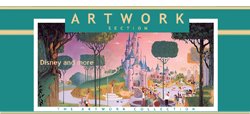
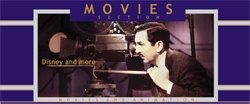











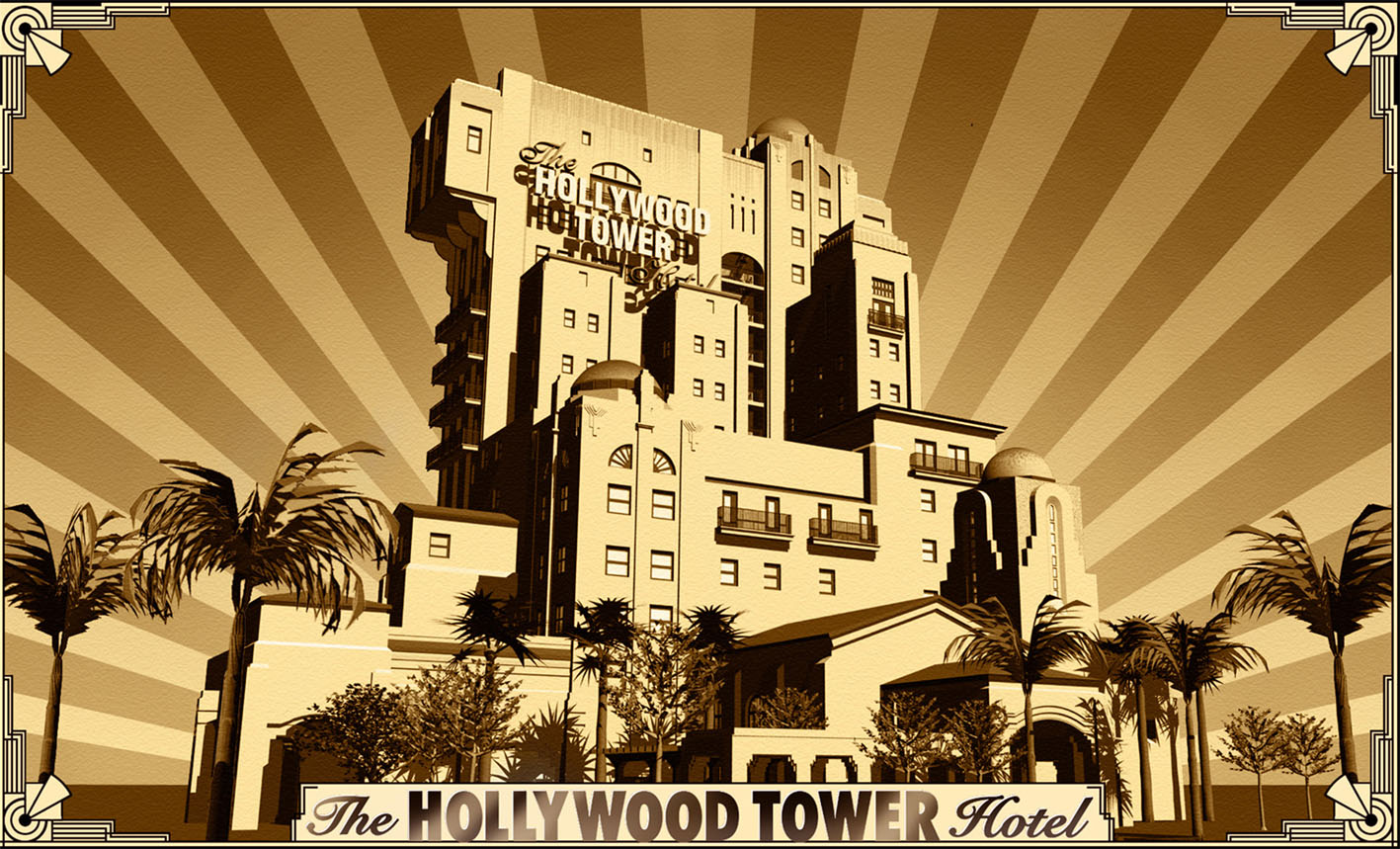



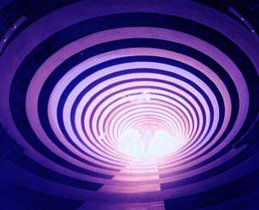
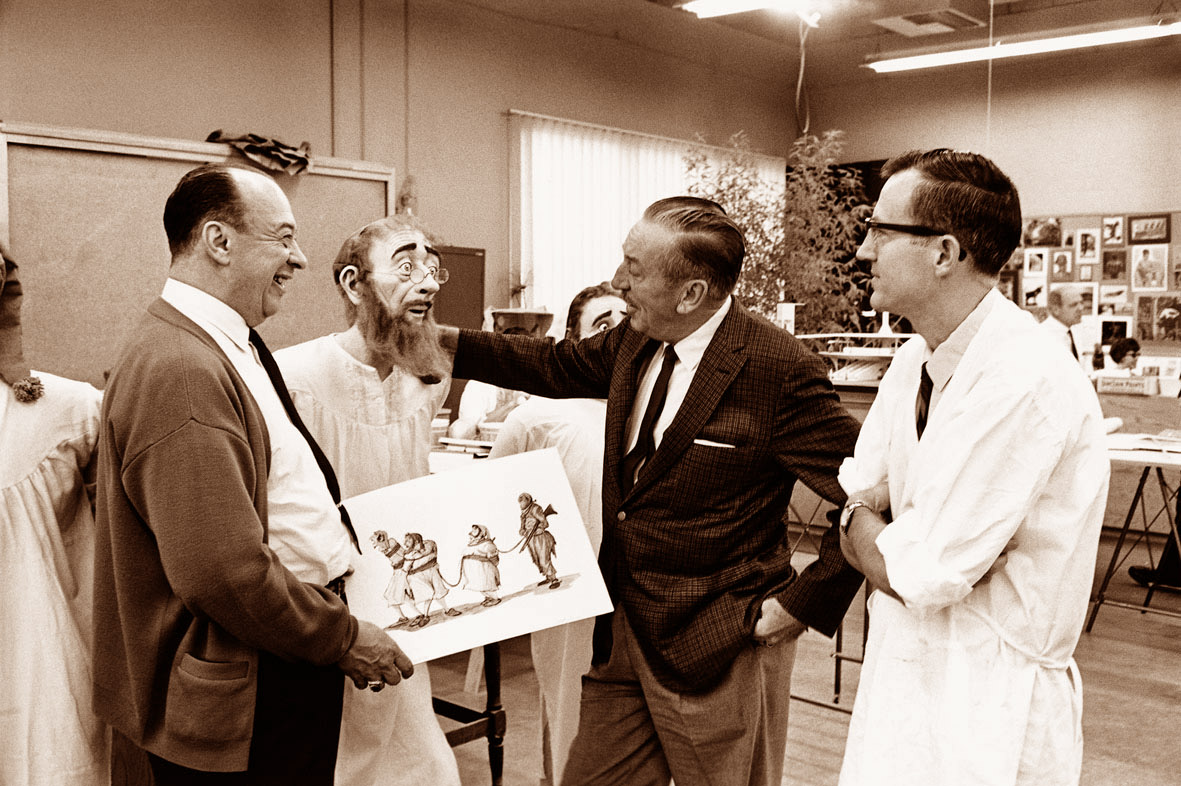
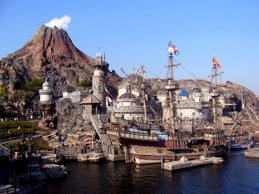

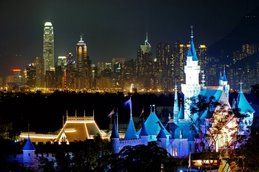











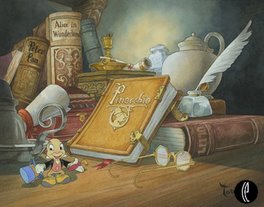
2 comments:
Alain - great work!
I like the idea of a prehistoric/dinosaur ride with a different "in" than the usual, expected time-machine transport. I really think the whole Mayan approach would be successful - especially today, considering all of the hype around the Mayan prophecies (2012, etc.). And when that wears off, it would still be a cool, unexpected attraction!
Great work on conceptualizing this whole thing out... and of course the corresponding artwork is amazing!
Was this the start of ctx at animal kingdom?
Post a Comment